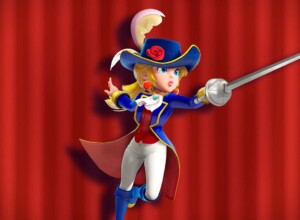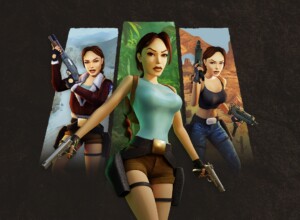If I could pair Jusant with another adventure, for a weekend double bill, it would be with The Falconeer.
That game, made by Tomas Sala, took place above an angry sea. The waters appeared to boil, and people flew between clifftop settlements on giant birds. In Jusant, the sea has steamed away, leaving a parched and salty plane, and a range of peaks to climb. One story could follow the other: a before and an after. Moreover, both games, though mechanically very different, deal with life on the rocks – with folks who fight the inevitable or go with the flow.
It’s hard to tell which course of action we take here. Is the figure at the heart of Jusant being forced up the sun-hot crags because there is nowhere else left, or is it an act of defiance? It certainly feels like one, at first. You spend most of the time scaling sheer walls of rock, but that soon melts into a hypnotic rhythm of gestures. This is one of those games that takes an established term and bores into its depths – while taking pains not to bore. Think of Death Stranding, which grabbed the words “walking simulator” and dug its heels in, strapped to them an intense new meaning, and made you think about buckles, weight distribution, and weakening rubber. Here the notion of a “platformer” is pestled into its finely ground components: the desperate gripping of ledges and the lurch of a long jump, above a sandy abyss.

The triggers govern your hands, and you squeeze them in alternation, eyeing up outcroppings and inch-deep nooks. The exact same process held sway in Grow Home, wherein you guided a small robot who clung to an immense plant, and holding sway was exactly what you had to do. Here you have a hank of rope at your disposal, which unspools from a gizmo on your back and retracts like the cord of a vacuum cleaner. You drive pitons into the stone like checkpoints; drop off the face, and you swing from the last one you planted. It’s tough not to relish a game that lets you copy Tom Cruise in the opening minutes of Mission: Impossible 2, crooking his knees and wedging them into a gap, letting his arms dangle in the wind. You don’t get to perform that exact manoeuvre in Jusant, but you can let one arm go limp, the better to rest and refill your stamina bar.
We need more games like this: lean studies that keep their heads down and home in on tight pursuits. Not that Jusant lacks complexity. We get leaps and double-leaps, bugs that scuttle across surfaces like moving handholds, and vines that burst upwards into busy networks. But there is a crispness to its design, to the single-minded nature of your quest, that makes you keen to press on, and up. The developer is Don’t Nod, the studio that gave us Life is Strange, and it’s a kick to see the narrative stripped back in favour of physicality. Around the halfway point, I saw a windmill and smiled. The homage to Ico – in which a windmill span in a chilly breeze – is plain, and you catch more than a halfhearted nod. The designer of that masterwork, Fumito Ueda, knew that the more airy a myth the more it needs to turn on the mechanical. Hence the tender shocks in the controller’s vibration as the two leads held hands, and the lofty was blown away by the intimate.

If only Jusant had gone further and tossed out the backstory entirely. One reason that Ueda’s landscapes have such staying power is that they depict the opposite – power ebbing into oblivion – and refuse to drown us in detail. The people in his worlds acquire a strangeness, like specks at the bottom of a painting, and we wonder about their lives. Don’t Nod scatters its terrain with pages of correspondence, diaries, lumps of context. Presumably, this was sparked by an urge to lend the world substance, but it drains the mystery. You look at the place and think: Life is ordinary.
If any wonder is preserved, it is thanks to the art direction, by Edouard Caplain, whose colours are a tide unto themselves. We begin with an array of prickly reds and browns; later, reaching a cool summit, you find it coated with a glug of pond-like greens. You taste the seeping onset of water long before you see a drop. One moment has you reaching a cavern in the belly of a mountain, and the gloom is filled with jellyfish, as if, in the absence of waves, they had taken to haunting the air. It brings to mind the scene, in Journey, where a patch of desert takes on a blue-lit murk, and vast creatures undulate above. The art director there was Matt Nava, and no one in games has done more to probe the possibilities of water as a substance and a mood. (When Nava made Abzû, which rollicked in an actual ocean, it felt like a release – as if he could finally breathe.)

In Jusant, Caplain gets close. Our thirst is sharpened early on, and there is such a rasping dryness to the backdrop that we are driven upwards by what we might call Navagation: partly the desire for a slaking flood, and partly the way the game leans on a visual language of murals, keys, alcoves, and altars. You never wonder why you are doing this. The protagonist is chirruped along by a beige thinglet, which resembles a tardigrade and is able to sniff out the right path; and our climber sports a pair of lightning bolts painted under each eye, as though crying out for a storm. It’s an odd and wordless pair, but they seem right for the quest that enfolds them. And, in the end, it’s the quest itself that does the talking. Who needs a narrative, when every minute packs its own cliffhanger?

Game: Jusant
Platform: PC, PlayStation 5, Xbox Series X|S
Developer: Don’t Nod
Publisher: Don’t Nod
Release Date: October 30, 2023






